To Index Home Page
To View The Images:
Click
IMAGES ONLY
Then use your mouse
with the slider on the right of this frame
to view the 40 + images.
And See All The Images:
Click
FULL TUTORIAL


Tutorial No.8. - Image 000f
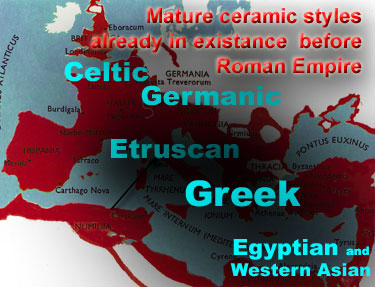
Detail map showing some of the main artistic styles already in existance before the Roman conquest.

Tutorial No.8. - Image 000t Quick Find List of Tutorial Topics

000b Map showing Roman Expansion 300-100BC ca.
Tutorial No.8. - Pic.intro 7058
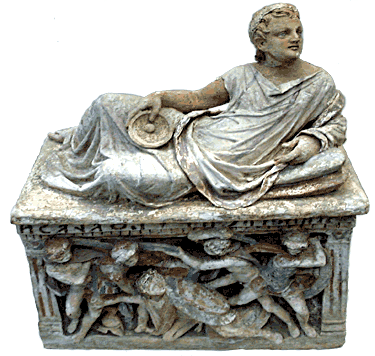
7058 Etruscan painted terracotta funerary burial urn ca.150 BC.

Tutorial No.8. - Pic.intro2 7036
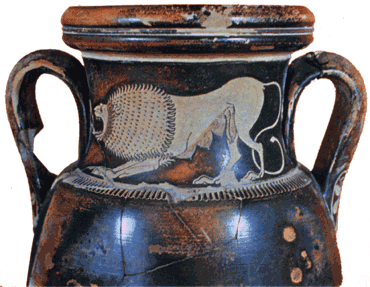
7036 Part of a Greek Red-figure jar from Spina, Italy ca.490 BC NMF

Tutorial No.8. - Pic.intro3 8043 & 8047
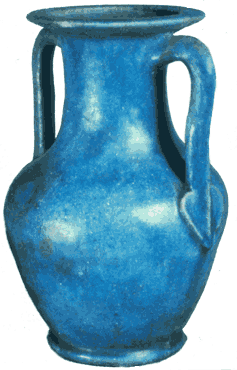
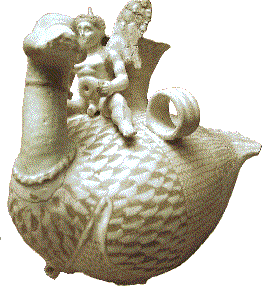
Late Helenistic(probably Ptolomaic Egyptian) Fritware.

Tutorial No.8. - Pic.intro4 8052
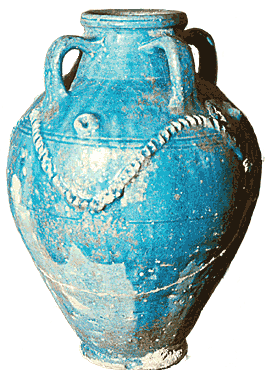
8052 Alkaline-glazed vessel. prob. N.Syria. 2nd-3rd centuries AD.

Tutorial No.8. - Pic.intro5 8036
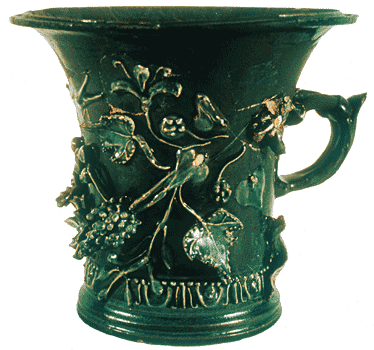
8063 A lead-glazed cup with applied decoration. ca. 1st century BC. Corinth AMC.

Tutorial No.8. - Pic.intro6 8070
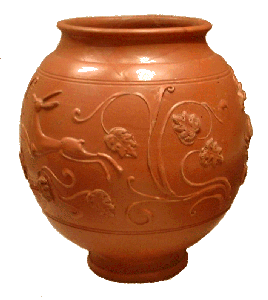
8070 Red gloss "barbotine" decorated cup.2nd century AD. British. BML.

End of Background Information
- The Roman Empire - Rise & Fall


Tutorial No.8. - Image 000a
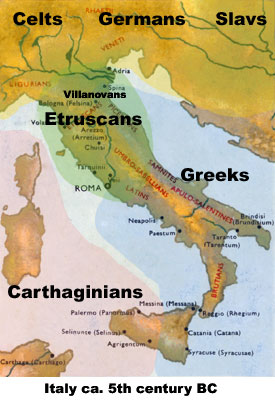
Map marking the greatest extent of the Roman Empire during the middle of the 2nd CENTURY AD
Click for other maps.

Tutorial No.8. - Image 000b
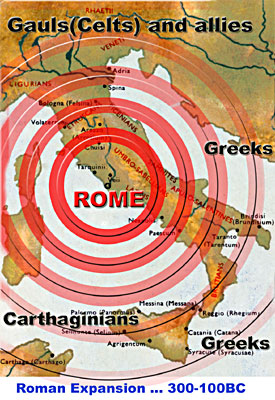
Map showing Roman Expansion 300-100BC ca.
Click for other maps.

Tutorial No.8. - Image 000c
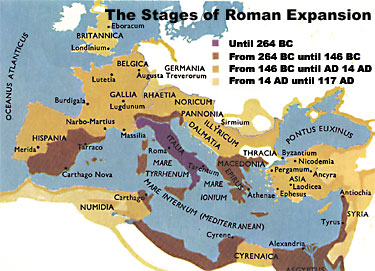
Map showing Roman World ca. 300AD.
Click for other maps.

Tutorial No.8. - Image 000d
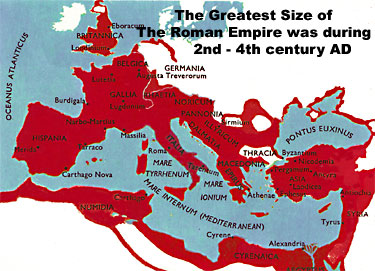
Detail map showing some of the main artistic styles already in existance before the Roman conquest.
Click for other maps.

Tutorial No.8. - Image 000e
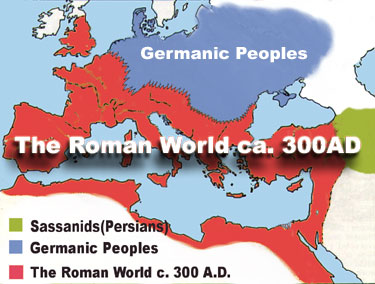
Detail map showing some of the main artistic styles already in existance before the Roman conquest.
Click on lens to return to first map

Tutorial No.8. - Image 8001
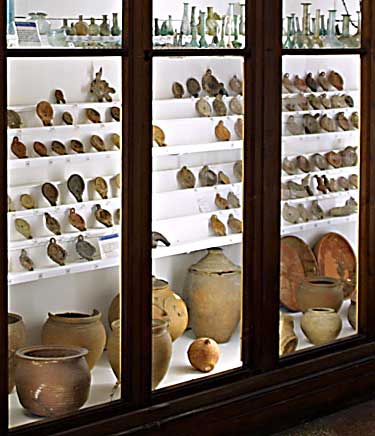
Typical museum exhibit of a collection of Roman Glass and pottery.

Tutorial No.8. - Image 8002
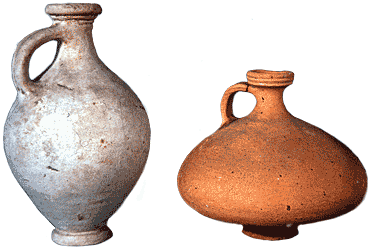
8002 Common Roman storage jars.

Tutorial No.8. - Image 8003
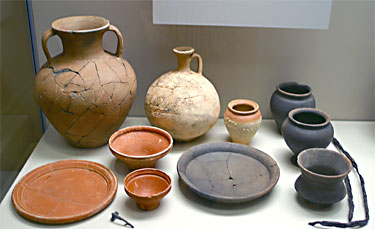
8003 A Collection of common kitchen pots. BML

Tutorial No.8. - Image 8004
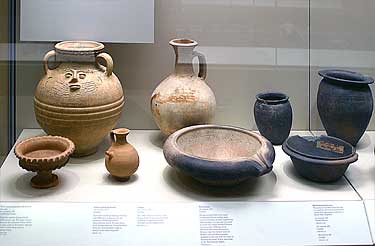
8004 A Collection of common kitchen pots. BML

Tutorial No.8. - Image 8005

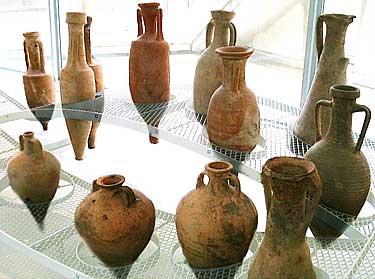
8005 Collection of Large Wine Jars in Roman Museum at Arles, France.

Tutorial No.8. - Image 8006
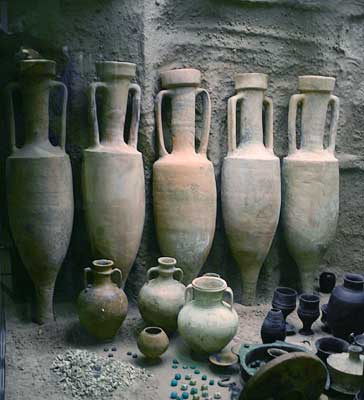
8006 Large Wine Jars found in tomb of British Chieftan. Ht:ca.130cm BM.

Tutorial No.8. - Image 8007
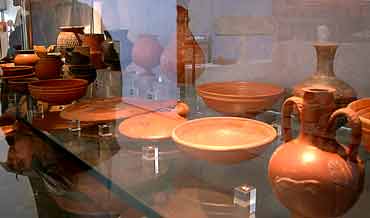
8007 Museum Case of Red Gloss Ware. AMB

Tutorial No.8. - Image 8008
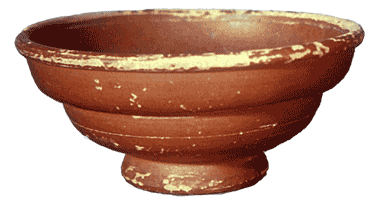
8008 Press moulded small red gloss dish. AMB

Tutorial No.8. - Image 8009
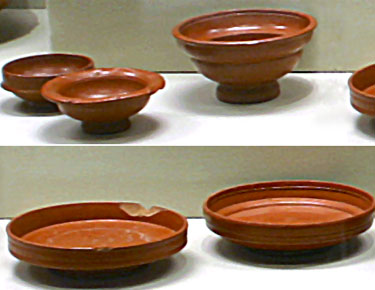
8009 Red Gloss Ware found in Britain. BML

End of Background Information
- Examples of Roman Silver Tableware


Tutorial No.8. - Image 8010
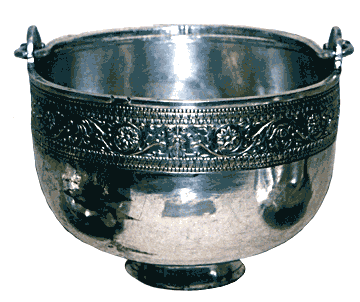
8010 Embossed double-walled bucket. BML.

Tutorial No.8. - Image 8011
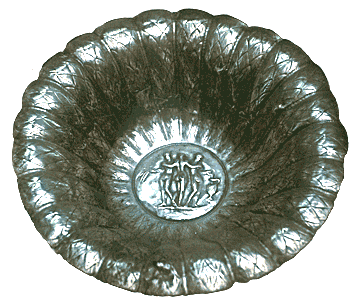
8011 Embossed toilet bowl. BML.

Tutorial No.8. - Image 8012
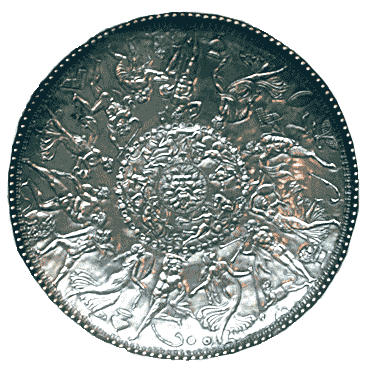
8012 Embossed serving dish. BML.

Tutorial No.8. - Image 8013
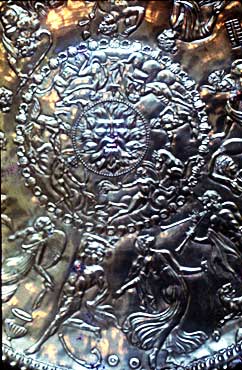
8013 Part of the centre of the silver serving dish.

Tutorial No.8. - Image 8014
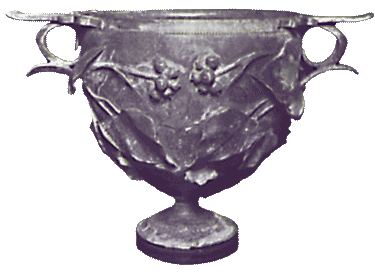
8014 Drinking cup, applied and relief decoration.

Tutorial No.8. - Image 8015
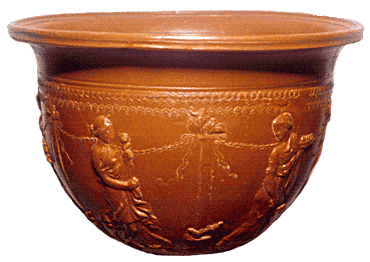
8015 Arretine Crater, or large bowl. Found at Capua, Italy. Diam:19cm. ca.27BC-14AD. BML.

Tutorial No.8. - Image 8016
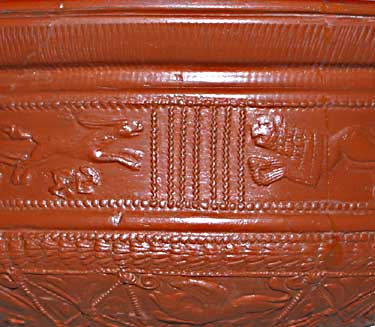
8016 Detail of the press-moulded relief decoration, diam:24.8cm. Graufesenque, SW.France. 1st century BC. BML.

Tutorial No.8. - Image 8017
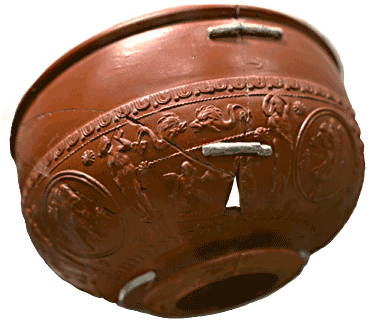
8017 Fine decorated bowl made in Central Gaul early to mid 2nd century AD. BML.


Tutorial No.8. - Image 8018
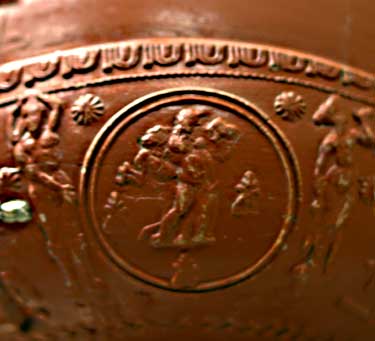
8018 Detail of relief medalion from the decorated bowl.

Tutorial No.8. - Image 8019
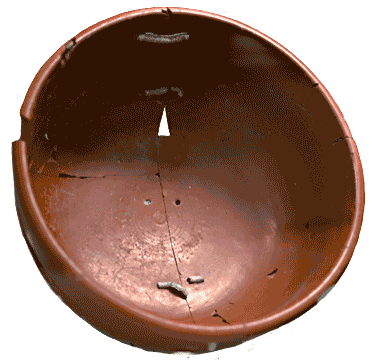
8019 Inside view of the repaired bowl

Tutorial No.8. - Image 8020
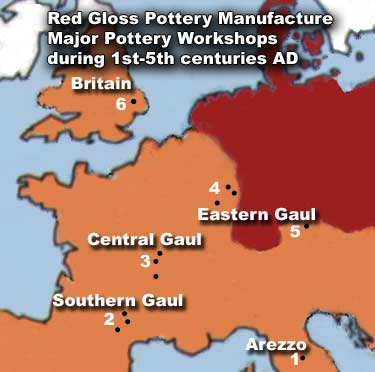
8020 Map of Western Europe showing ancient 1st century BC pottery factory sites

Tutorial No.8. - Image 8021
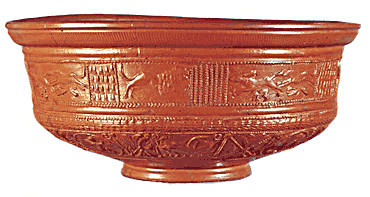
8021 shallow red-gloss serving bowl with press-moulded relief decoration, diam:24.8cm. Graufesenque, SW.France. 1st century BC. BML.

Tutorial No.8. - Image 8022
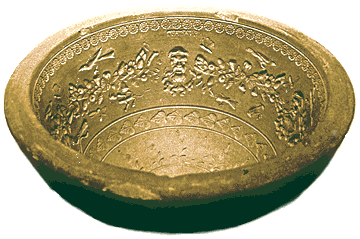
8022 Terracotta bowl mould showing impressed design. ca.10BC-10BC. VAL.

Tutorial No.8. - Image 8023
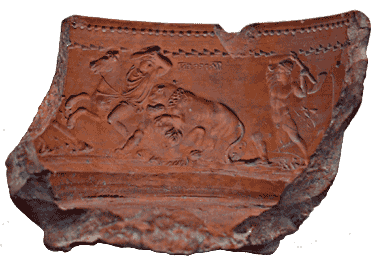
8023 Portion of Arretine mould. Ht:11.3cm. BML.

Tutorial No.8. - Image 8024
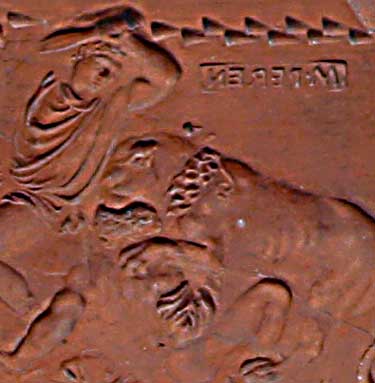
8024 Detail of of Arretine mould. Ht:11.3cm. BML.

Tutorial No.8. - Image 8025
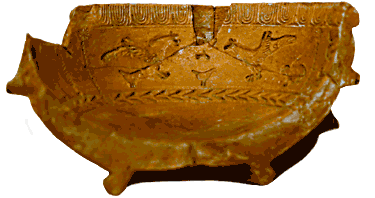
8025 Fragment of a mould made in Colchester, England late 2nd Century AD BML.

Tutorial No.8. - Image 8026
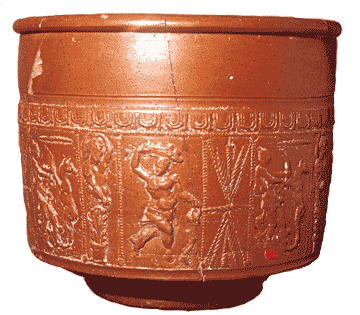
8026 A South Gaulish (Lezoux) cylindrical vase 2nd century AD but found in Bedfordshire England. BM.

Tutorial No.8. - Image 8027
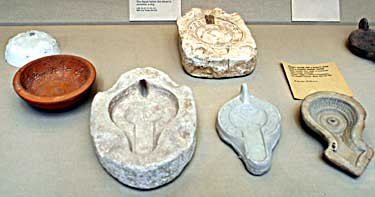
8027 Small press-moulds for lamps. BML.

Tutorial No.8. - Image 8028
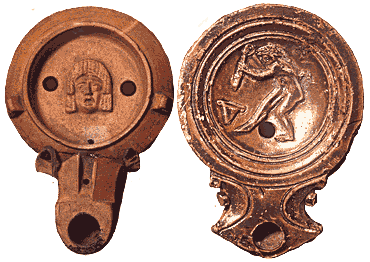
8028 Two small press-moulded lamps. BML.

Tutorial No.8. - Image 8029
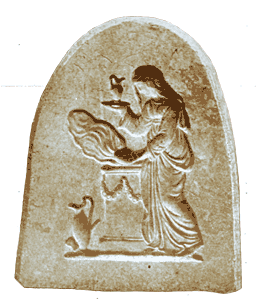
8029 A very small fired clay press-mould with carved, or pressed-out, decoration. BML.

Tutorial No.8. - Image 8030
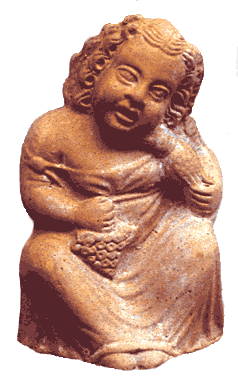
8030 A small press-moulded clay figurine.

End of Background Information
The Examples of Roman Glass Techniques


Tutorial No.8. - Image 8031
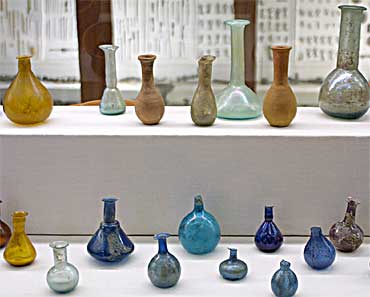
8031 Various Roman small coloured blown-glass bottles. Italy. MCB.

Tutorial No.8. - Image 8032
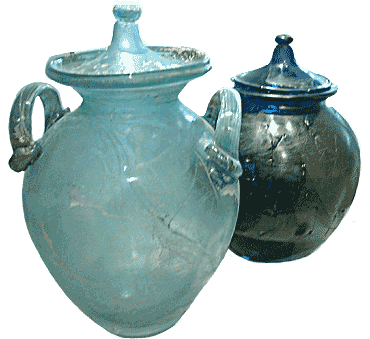
8032 Large,lidded glass vessels ht:25cm. S.France RMA.

Tutorial No.8. - Image 8033
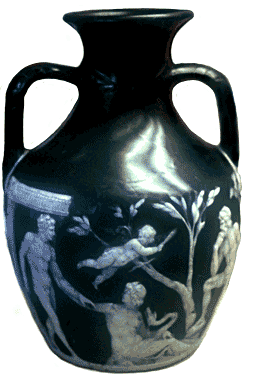
8033 "Cameo glass" - The Portland Vase.ca.80AD BML.

Tutorial No.8. - Image 8034
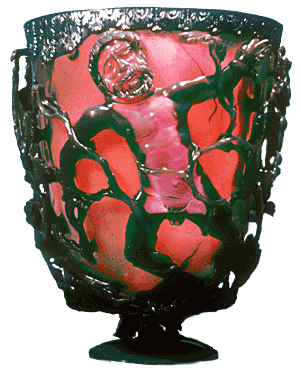
8034 The Lycurgus cup- cut from a single piece of coloured glass. 4th century AD. Possibly carved in Rome. BML

Tutorial No.8. - Image 8035
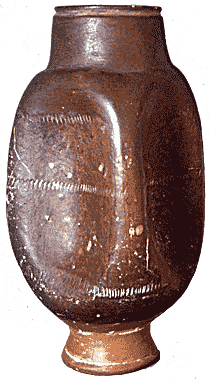
8035 small jar. Britain. BML.

Tutorial No.8. - Image 8036
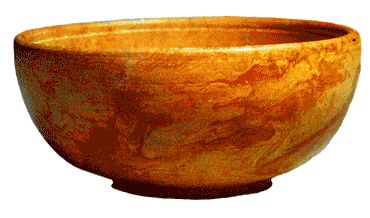
8036 small bowl - marbled slip. Britain. BML.

Tutorial No.8. - Image 8037
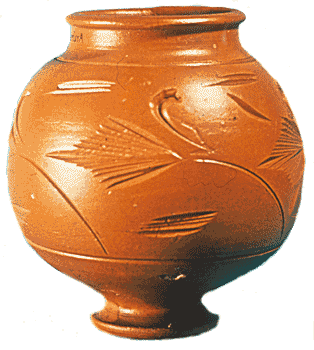
8037 A small red gloss bottle, incised decoration. Britain. BML.

Tutorial No.8. - Image 8038
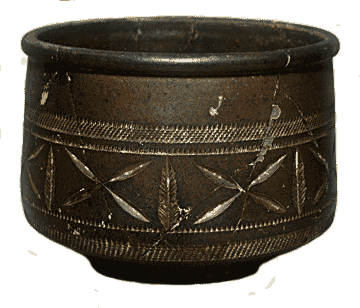
8038 Black gloss bottle with incised decoration. Eastern Gaul.

Tutorial No.8. - Image 8039
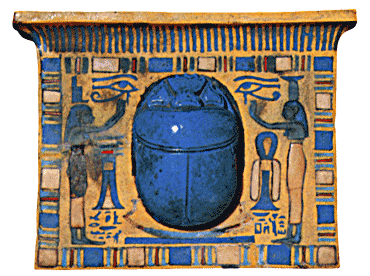
8039 A small Egyptian Fritware Amulet.

Tutorial No.8. - Image 8040
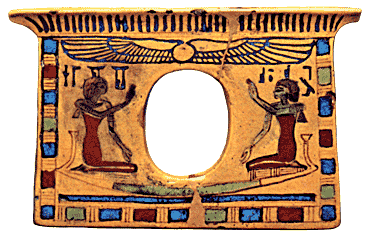
8040 A small Egyptian Fritware Amulet.

Tutorial No.8. - Image 8041
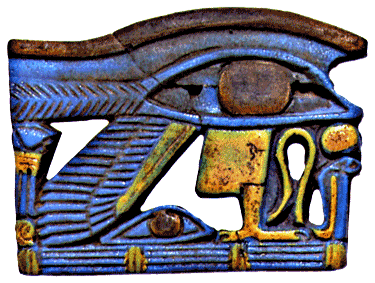
8041 Fritware Eye of Horus amulet.

Tutorial No.8. - Image 8042
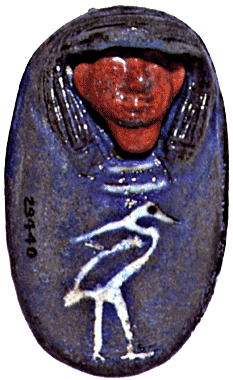
8042 Fritware Horus Amulet.

Tutorial No.8. - Image 8043

8043 Press-moulded fritware vase. Ptolomaic Egypt.

Tutorial No.8. - Image 8044
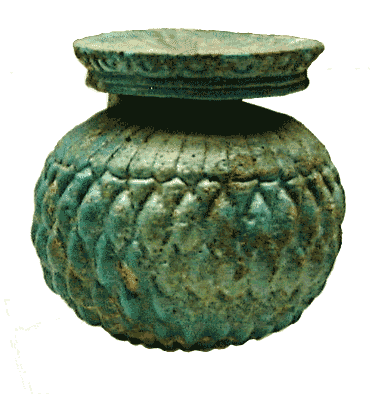
8044 Egypto-Roman perfume bottles in fritpaste. BML

Tutorial No.8. - Image 8045
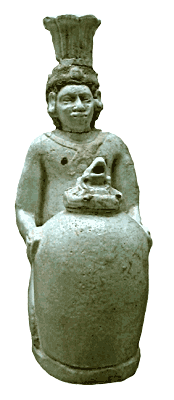
8045 Egypto-Roman perfume bottle .BML

Tutorial No.8. - Image 8046
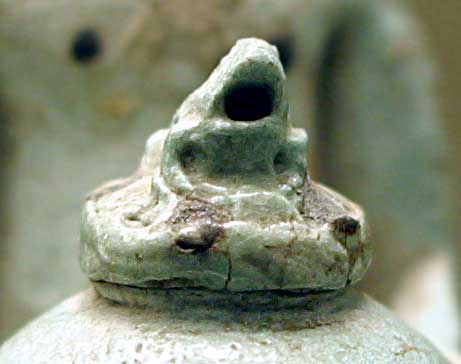
8046 Detail of Frog: Egypto-Roman perfume bottle, fritpaste.BML

Tutorial No.8. - Image 8047
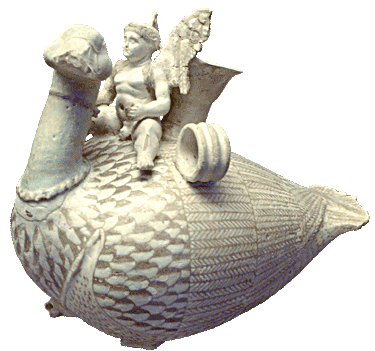
8047 "Fritpaste" jug. "Boy on a Goose" ca.300-250BC. BML.

Tutorial No.8. - Image 8048
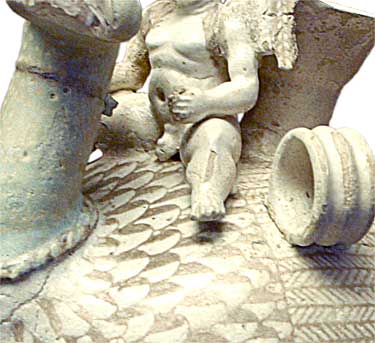
8048 Detail: Fritpaste jug. "Boy on a Goose" ca.300-250BC. BML.

Tutorial No.8. - Image 8049
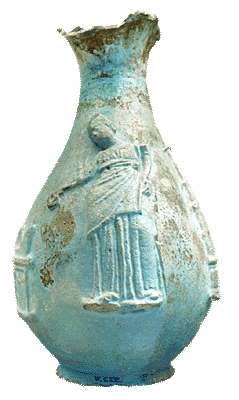
8049 Hellenistic(Egyptian) libation jug ca.300-250BC. BML.

Tutorial No.8. - Image 8050
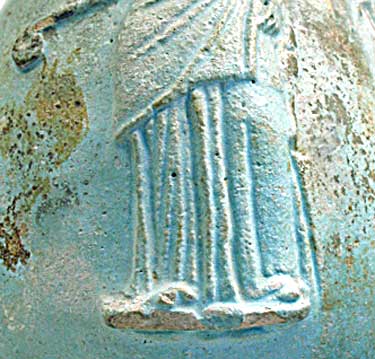
8050 Detail of jug above.

Potters Notes:
|

Tutorial No.8. - Image 8051
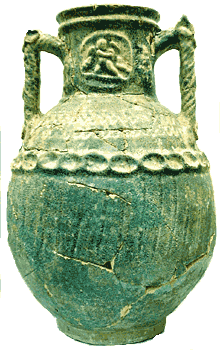
8051 Alkaline brush-glazed vessel.Ht:ca.25cm. N.Syria. 2nd-3rd century AD. BML.

Tutorial No.8. - Image 8052

8052 Alkaline-glazed vessel. prob. N.Syria. 2nd-3rd centuries AD.

Tutorial No.8. - Image 08053
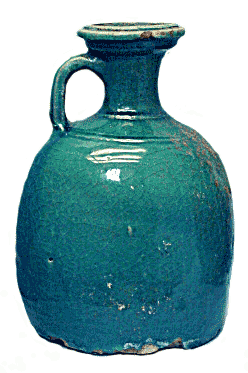
8053 Green glazed small jug. 1st-2nd Century AD. Uruk, S Iraq

Tutorial No.8. - Image 8054
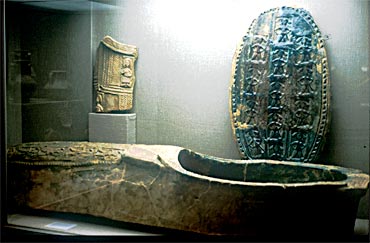
Click Picture for close details of the glazed coffin lid.
8054 Alkaline glazed coffin lid ca.1st century AD. Uruk, S Iraq. BML

Tutorial No.8. - Image 8055
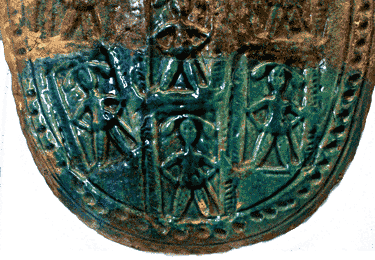
8055 Bottom detail: coffin lid. BML

Tutorial No.8. - Image 8056
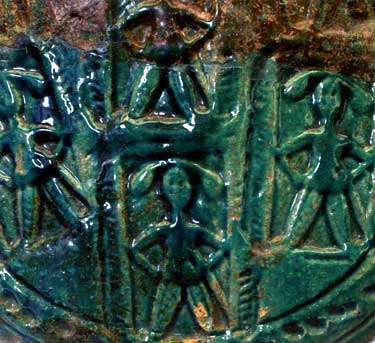
8056 Closer detail of glazed press-molded figures: coffin lid. BML

Tutorial No.8. - Image 8057
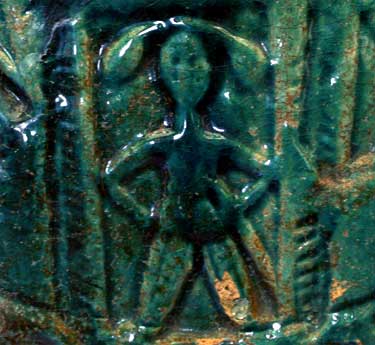
8057 Detail of figure with headdresss: coffin lid. BML

Tutorial No.8. - Image 8058
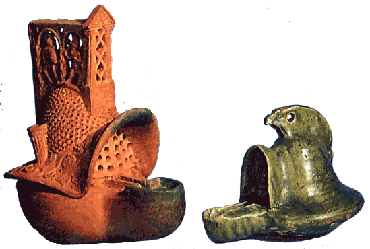
8058 Two pottery oil lamps - one is lead-glazed.

Tutorial No.8. - Image 8059
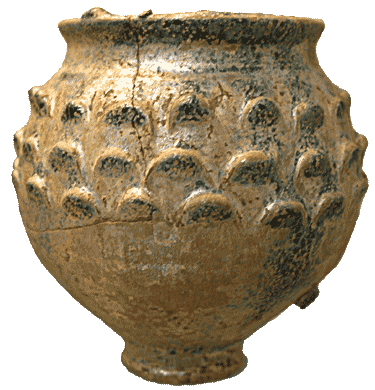
8059 Small decorated globular pot - glaze decay. Made near Rome ca.50-100AD. BML.

Tutorial No.8. - Image 8060
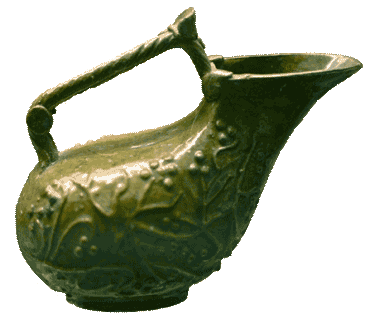
8060 Small lead-glazed boat jug. Made in S.Italy. ca. 1-50AD. BML.

Tutorial No.8. - Image 8061
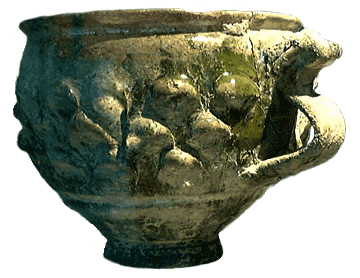
8061 Lead-glazed drinking cup ca 1st-2nd centuries AD. S.Gaul. RMA.

Tutorial No.8. - Image 8062
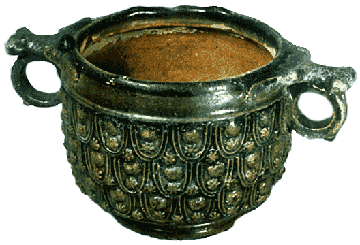
8062 A lead-glazed cup with moulded relief dec. 1st century AD Asia Minor. BML.

Tutorial No.8. - Image 8063

8063 A lead-glazed cup with applied decoration. ca. 1st century BC. Corinth AMC.

Tutorial No.8. - Image 8064
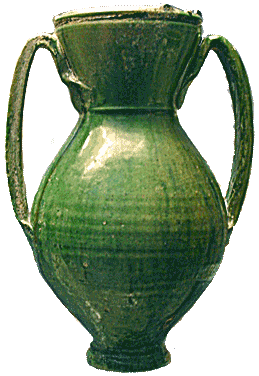
8064 Lead-glazed two-handled chalice. Made in or near Rome. AD50-100 BML.

Tutorial No.8. - Image 7019
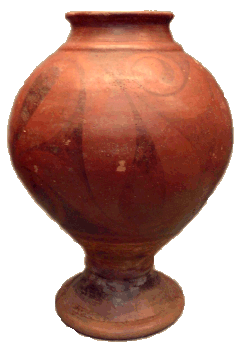
7019 Painted Urn from Prunay, N.France Late La Tèene culture 5-3rd century BC ht:12.2cm BM.

Tutorial No.8. - Image 7020
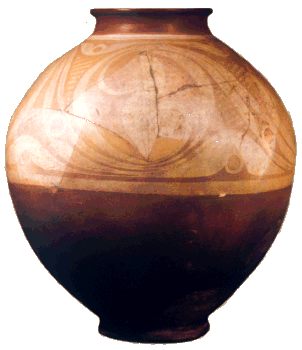
7020 Celtic vase with painted decoration ht:36cm Late La Tène ca.100 BC. Basel Switzerland. HMB.

Tutorial No.8. - Image 8065
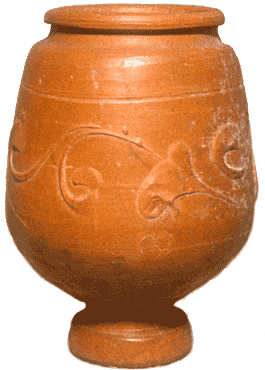
8065 Red Gloss slip dec. Beaker. ca. 3rd Century BC.British or Gaulish BML.

Tutorial No.8. - Image 8066
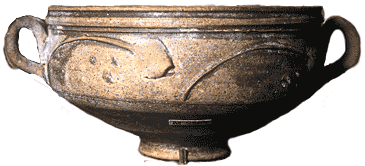
8066 A Romano-Celtic drinking cup from Britain.The dark brown/black gloss was thin and has worn away. BML.

Tutorial No.8. - Image 8067
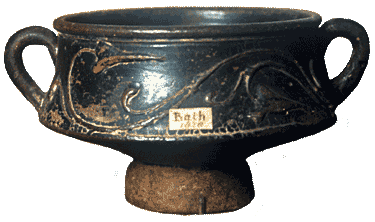
8067 A Romano-Celtic drinking cup with the dark black/brown gloss well preserved. Britain. BML.

Tutorial No.8. - Image 8068
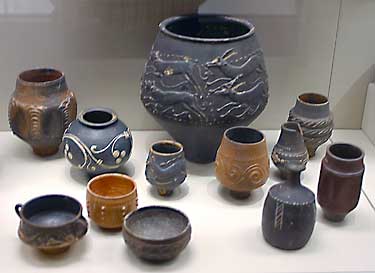
8068 Group of Romano-British pots.

Tutorial No.8. - Image 8069
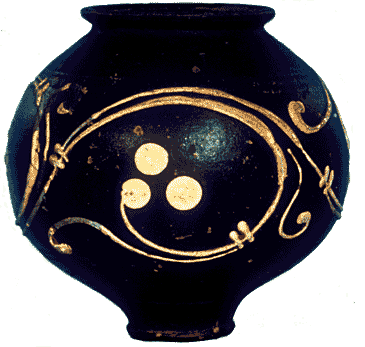
8069 Black-gloss white slip decorated globular cup. early 3rd century AD. British. BML

Tutorial No.8. - Image 8070

8070 Red gloss "barbotine" decorated cup.2nd century AD. British. BML.

Tutorial No.8. - Image 8071

8071 Detail of relief decoration.

Tutorial No.8. - Image 8072
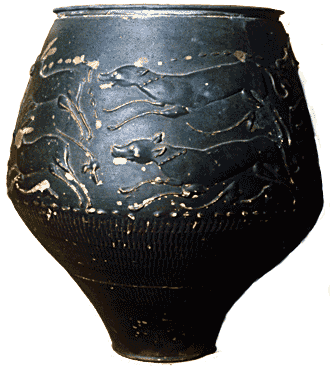
8072 Black-Gloss Beaker Barbotine-decorated. 2nd century AD British BML.

Tutorial No.8. - Image 8073
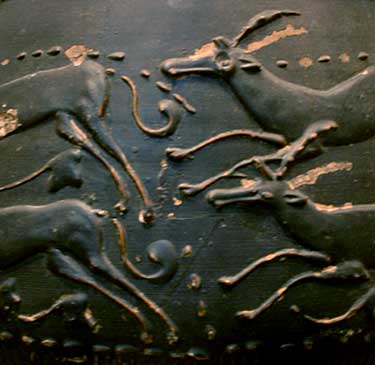
8073 Detail of the fleeing deer.

Tutorial No.8. - Image 8074
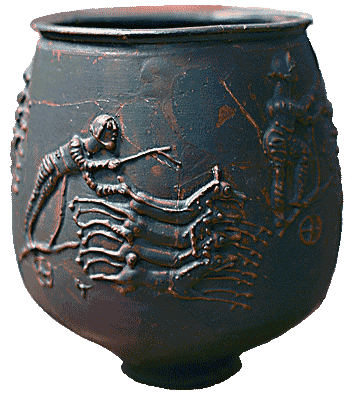
8074 British Black-gloss vase showing chariot race decoration. 2nd century AD Colchester, Essex, England. BML.

Tutorial No.8. - Image 8075
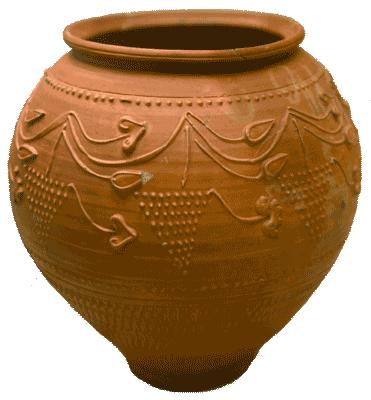
8075 Red Gloss Pot - piped decoration. 1st century AD. Rheinland BML.

Tutorial No.8. - Image 8076
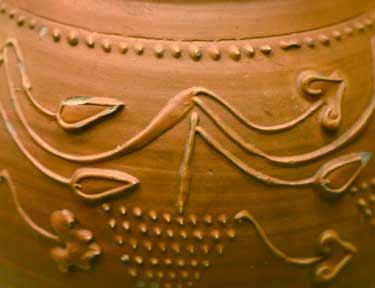
8076 Detail of vine and grape decoration.


Tutorial No.8. - Image 8077
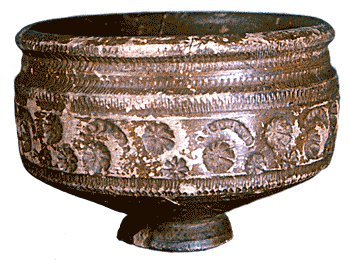
8077 Black Gloss Stamp-decorated cup with foot. BML.

Tutorial No.8. - Image 8078
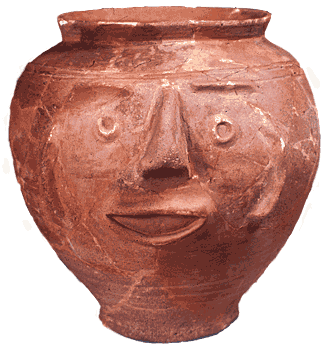
8078 A small "face" pot.

Tutorial No.8. - Image 8079
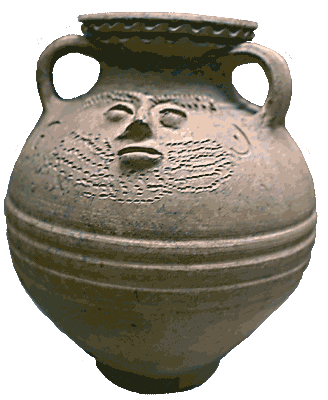
8079 A flagon with bearded face.

Tutorial No.8. - Image 8080
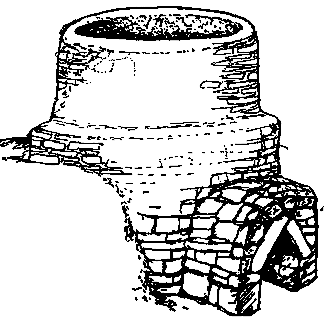
8080 Updraft kiln drawing: an ancient Cretan-Greek-Roman pattern still used today.

Tutorial No.8. - Image 8081
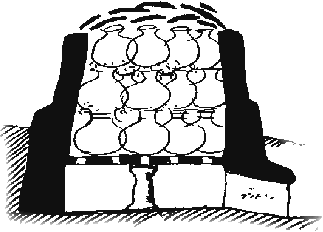
8081 Sectional diagram of this Updraft kiln pattern still used today.

Tutorial No.8. - Image 8082
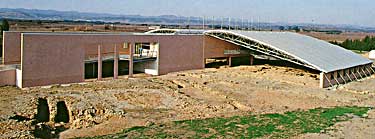
8082 Amphoralis, Pottery Museum.Beziers, S.France

Tutorial No.8. - Image 8083
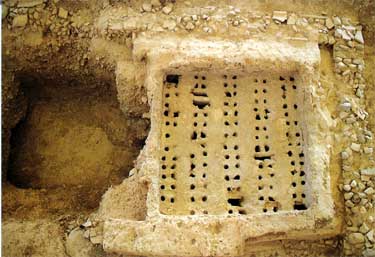
8083 Kiln floor - rectangular shape, Amphoralis, France.

Tutorial No.8. - Image 8084
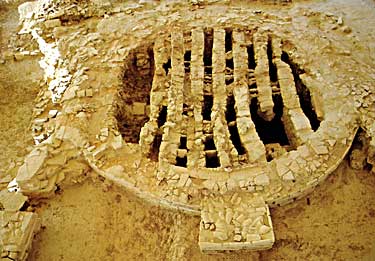
8084 Kiln floor - circular shape, Amphoralis, France.

Tutorial No.8. - Image 8085
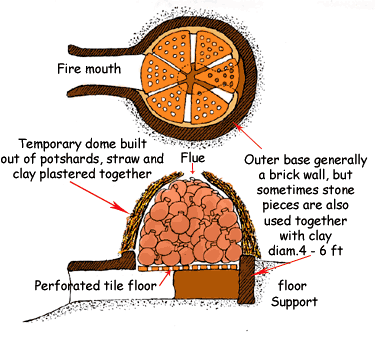
8085 8085 Circular Roman kilns - Reconstruction.

Tutorial No.8. - Image 8086
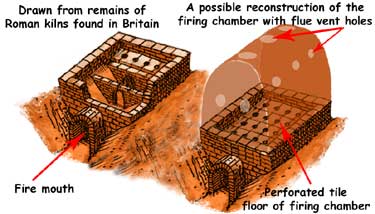
8085 Rectangular Romano-British kilns - Reconstruction.

Tutorial No.8. - Image 8087
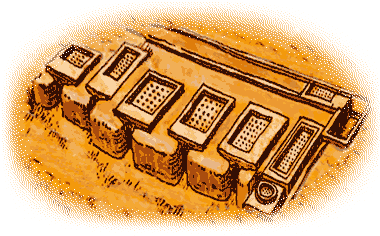
Drawing of Roman rectangular kilns excavated in England.

Tutorial No.8. - Image 8088
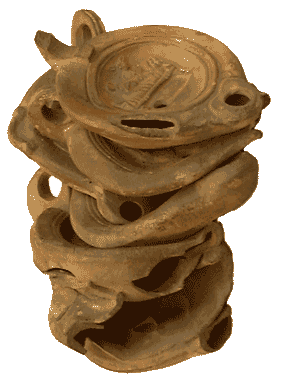
8088 A small pile of over-fired oil lamps.
That was the last illustration.
I hope you have found Tutorial No.8 interesting and perhaps useful.
The next Tutorial No.9 is the first tutorial of four on Chinese Ceramics.

That was the last illustration in this tutorial

Victor Bryant ©1994,2003
To Index Home Page










